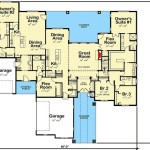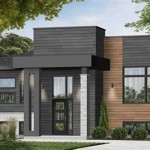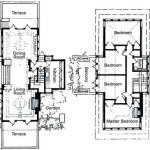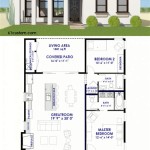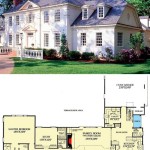A Colonial House Floor Plan refers to the architectural design of the interior layout of a Colonial-style house, a prevalent housing type constructed during the Colonial era in the United States. These plans delineate the arrangements, dimensions, and interconnections of rooms, hallways, staircases, and other interior spaces within the house.
Colonial House Floor Plans played a pivotal role in shaping the everyday living patterns of the occupants and reflecting the social, cultural, and economic norms of the Colonial period. A typical Colonial House Floor Plan often featured a central chimney with fireplaces providing a source of warmth and cooking. The rooms were generally arranged around the chimney, with a main living area known as the “keeping room” serving as the family’s primary gathering space.
In the main body of this article, we will delve deeper into the characteristics and variations of Colonial House Floor Plans, examining the evolution of these designs over time and their continued relevance in modern architecture.
Colonial House Floor Plans possessed various notable characteristics:
- Central Chimney
- Fireplaces for Warmth
- Keeping Room
- Formal Dining Room
- Parlors for Entertaining
- Separate Bedrooms
- Narrow Staircases
- Limited Closets
These features contributed to the unique character and functionality of Colonial-style homes.
Central Chimney
The central chimney was a defining feature of Colonial House Floor Plans. It served several important functions:
- Structural Support: The massive chimney provided structural support to the house, helping to bear the weight of the roof and upper floors.
- Heat Source: Fireplaces built into the chimney were the primary source of heat for Colonial homes. The central location of the chimney allowed heat to radiate throughout the house, keeping occupants warm during cold winters.
- Cooking: The fireplaces were also used for cooking. Large cooking pots and kettles could be hung over the open flames, and ovens were often built into the chimney itself.
- Ventilation: The chimney acted as a natural ventilation system, drawing smoke and cooking odors out of the house and improving indoor air quality.
The central chimney had a significant impact on the layout of Colonial homes. Rooms were typically arranged around the chimney, with the kitchen and keeping room (the main living space) located closest to the heat source. The chimney also determined the placement of staircases and hallways, as they needed to provide access to the upper floors without obstructing the flow of heat.
Fireplaces for Warmth
Fireplaces played a crucial role in providing warmth for Colonial homes. During the cold winter months, fireplaces were the primary source of heat, keeping occupants comfortable and preventing illness. The central chimney, a defining feature of Colonial House Floor Plans, facilitated the efficient distribution of heat throughout the house.
Fireplaces were typically constructed of brick or stone, and they were often large and imposing. They were often placed in the center of the main living space, known as the keeping room. The keeping room was the heart of the home, where the family gathered for meals, socializing, and warmth. The fireplace in the keeping room was particularly important, as it provided a central gathering point for the family and helped to create a cozy and inviting atmosphere.
In addition to the keeping room, fireplaces were also common in other rooms of the house, such as the dining room, parlor, and bedrooms. These fireplaces provided supplemental heat, ensuring that the entire house was comfortable and livable, even during the coldest months of the year. The placement of fireplaces in various rooms also allowed for greater flexibility in how the house was used. For example, the family could retreat to the parlor for more formal gatherings, where the fireplace would provide warmth and ambiance.
Overall, fireplaces were an essential element of Colonial House Floor Plans, providing warmth, comfort, and a sense of coziness to the occupants. Their strategic placement throughout the house ensured that heat was evenly distributed, creating a comfortable and inviting living environment.
Keeping Room
The keeping room, also known as the great room or family room, was the central and most important room in a Colonial House Floor Plan. It served a variety of functions, including:
- Family Gatherings: The keeping room was the primary gathering space for the family. It was where they ate meals, socialized, and spent time together. The large fireplace in the keeping room provided warmth and ambiance, creating a cozy and inviting atmosphere for family gatherings.
- Cooking and Food Preparation: In many Colonial homes, the keeping room also served as the kitchen. The fireplace provided a convenient place to cook meals, and there was often a built-in oven and other cooking implements. The keeping room was also used for food preparation, such as baking bread and preserving fruits and vegetables.
- Sleeping: In some Colonial homes, the keeping room was also used as a sleeping space. This was especially common in smaller homes where there were not enough bedrooms for everyone. The family would sleep on trundle beds or pallets on the floor of the keeping room.
- Work and Chores: The keeping room was also used for a variety of work and chores. The family might spin wool, weave cloth, or make candles in the keeping room. It was also a common place for the children to do their homework or play.
The keeping room was the heart of the Colonial home. It was a multi-purpose space that served a variety of functions for the family. Its central location and large fireplace made it a warm and inviting gathering place, and its proximity to the kitchen and other work areas made it a convenient and efficient space for everyday living.
Formal Dining Room
The formal dining room was another important room in a Colonial House Floor Plan. It was typically used for special occasions, such as holidays, dinner parties, and other formal gatherings. The formal dining room was often located near the front of the house, and it was usually one of the largest rooms in the house.
- Impressing Guests: The formal dining room was often used to impress guests. It was a place where the family could show off their wealth and status. The room was typically furnished with fine furniture, such as a large dining table, chairs, and a sideboard. The walls were often decorated with paintings and other artwork.
- Entertaining: The formal dining room was also used for entertaining guests. The family would host dinner parties and other social gatherings in the formal dining room. The room was large enough to accommodate a large number of guests, and it provided a comfortable and elegant setting for entertaining.
- Holiday Celebrations: The formal dining room was often used for holiday celebrations. The family would gather in the dining room for special meals on holidays such as Christmas, Thanksgiving, and Easter. The room provided a warm and inviting setting for family gatherings.
- Everyday Use: While the formal dining room was primarily used for special occasions, it could also be used for everyday dining. The family might eat breakfast or lunch in the formal dining room if they wanted a more formal setting. The room could also be used for other purposes, such as studying or working.
The formal dining room was an important part of a Colonial House Floor Plan. It was a place where the family could entertain guests, celebrate special occasions, and enjoy meals together. The room was typically large and elegantly furnished, and it reflected the family’s wealth and status.
Parlors for Entertaining
Parlors were formal rooms used for entertaining guests. They were typically located near the front of the house and were often the most elaborately decorated rooms in the house. Parlors were furnished with fine furniture, such as sofas, chairs, tables, and sideboards. The walls were often decorated with paintings, mirrors, and other artwork.
Parlors were used for a variety of entertaining purposes. Families might host dinner parties, tea parties, and other social gatherings in the parlor. The parlor was also used for more formal occasions, such as weddings and funerals. The room provided a comfortable and elegant setting for guests to socialize and enjoy themselves.
The size and grandeur of a parlor reflected the wealth and status of the family. Wealthier families had larger parlors that were more elaborately decorated. Some parlors even had their own fireplaces, which made them even more comfortable and inviting. Parlors were an important part of Colonial House Floor Plans, and they played a significant role in the social lives of the occupants.
In addition to entertaining guests, parlors were also used for other purposes. They might be used as a sitting room for the family, a place to read or write, or a place to display the family’s prized possessions. Parlors were versatile rooms that could be used for a variety of purposes, depending on the needs of the family.
Separate Bedrooms
In Colonial America, most families lived in small homes with limited space. As a result, it was common for family members to share bedrooms. However, as the colonies grew and prospered, some families began to build larger homes with separate bedrooms for each family member.
Separate bedrooms offered a number of advantages. First, they provided privacy for family members. This was especially important for adults who wanted to have their own space to sleep and dress. Second, separate bedrooms helped to improve sleep quality. When people sleep in the same room, they can disturb each other’s sleep with their movements, snoring, or talking. Separate bedrooms eliminated this problem and allowed family members to get a good night’s sleep.
Third, separate bedrooms helped to prevent the spread of illness. In the days before modern medicine, it was common for people to get sick with infectious diseases. When family members shared bedrooms, they were more likely to spread these diseases to each other. Separate bedrooms helped to reduce the risk of infection by isolating sick family members.
Finally, separate bedrooms provided a sense of luxury and comfort. In the early days of Colonial America, most people lived in simple homes with few amenities. However, as the colonies grew and prospered, some families began to build more elaborate homes with separate bedrooms for each family member. These bedrooms were often furnished with fine furniture and decorated with beautiful fabrics. They provided a comfortable and relaxing retreat for family members at the end of a long day.
Narrow Staircases
Staircases in Colonial homes were typically narrow and steep. This was due to a number of factors, including the limited space in most Colonial homes, the need to conserve building materials, and the desire to create a more formal and elegant appearance.
- Limited Space: Most Colonial homes were relatively small, and there was often not enough space for wide staircases. Narrow staircases helped to save space and make the most of the available room.
- Conservation of Building Materials: Building materials were scarce and expensive in Colonial America. Narrow staircases used less materials than wide staircases, which helped to reduce the cost of construction.
- Formal Appearance: Narrow staircases were considered to be more formal and elegant than wide staircases. This was because narrow staircases created a more intimate and sophisticated atmosphere.
- Safety: Narrow staircases were also considered to be safer than wide staircases. This was because narrow staircases were less likely to collapse under the weight of multiple people.
While narrow staircases were common in Colonial homes, they could also be dangerous. The steep and narrow steps made it easy to fall and get injured. As a result, it was important to be careful when using staircases in Colonial homes.
Limited Closets
Colonial homes typically had limited closet space. This was due to a number of factors, including the limited space in most Colonial homes, the lack of available building materials, and the different storage practices of the time.
Most Colonial homes were relatively small, and there was often not enough space for large closets. Closets were often built into the walls, and they were typically small and narrow. This was because closets were not considered to be an important part of the home. People in Colonial America typically stored their belongings in chests, trunks, and other pieces of furniture.
Building materials were also scarce and expensive in Colonial America. Closets require a significant amount of wood to build, and this was a valuable resource. As a result, colonists often chose to use their limited building materials for more important parts of the house, such as the frame, the roof, and the windows.
Finally, the storage practices of the time also contributed to the limited closet space in Colonial homes. People in Colonial America were more likely to store their belongings in chests and trunks than in closets. This was because chests and trunks were portable, and they could be easily moved from one place to another. Closets, on the other hand, were built into the walls, and they were not as easily moved.
As a result of these factors, Colonial homes typically had limited closet space. People in Colonial America stored their belongings in chests, trunks, and other pieces of furniture. Closets were not considered to be an important part of the home, and they were often small and narrow.










Related Posts

